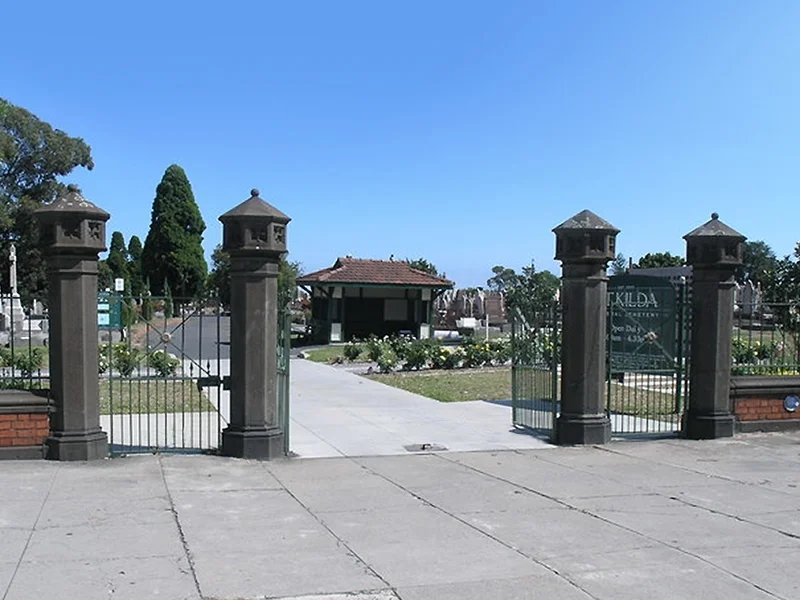Celebrating inventors, designers and creators of the past
National Inventors day is celebrated on February 11 each year and is a wonderful reminder for us to honour inventors of the past and present, and encourage designers and creators of the future. It can be easy to forget that at one point, many of the objects and inventions that have shaped the way we live our lives, had not yet been thought into existence. Many of those inventors may have even spent years of their lives creating, with their work only discovered after their passing.
As custodians of the rich history throughout Melbourne, we’re delighted to share with you some of the stories of inventors who are now laid to rest across many of our locations.
Henry Sutton (1855–1912) Brighton General Cemetery
Henry Sutton was a driven Ballarat born inventor, who, through his lifetime developed many designs inspired by science and engineering. From the young age of 11, Henry developed a keen interest in science and engineering and studied many books on the topic, reading all the scientific books in the Ballarat Mechanics' Institute before he was 14.
Continuing to pursue his keen interest in scientific advancement Henry designed a wireless radio, many different types of telephones as well as designing and building a torpedo. Henry’s experimental ornithopter even credited him as the first Australian to have experimented with heavier-than-air flight. Now, over 106 years after his death, Henry Sutton’s great-granddaughter published a book in his honour titled ‘Henry Sutton The Innovative Man.’ The book details many of Henry’s inventions and achievements throughout his lifetime.
Walter Reginald Hume (1873 – 1943) Springvale Botanical Cemetery
In 1910 Walter and his brother Ernest joined forces in forming ‘Hume’s Patent Cement Iron Syndicate Ltd’ within this company Walter developed his revolutionary centrifugal process for the manufacture of concrete pipes.
This new invention had a profound worldwide impact on the nature of the pipe manufacturing industry becoming the first within Australia to pioneer new technology and have it exported worldwide before World War II. Walters invention as significantly reducing the cost of constructing water, sewerage and drainage facilities throughout Australia.
Walter went on to begin numerous companies and established branches in all states of Australia further extend into New Zealand and Singapore and by 1943 had over sixty factories throughout Australasia, before he passing away in July 1943 from cancer.
Christina Rutherford MacPherson (1864-1936) St Kilda Cemetery
Christina Macpherson, although not an inventor as such, she is accredited as the first ‘creator’ of the music for the poem and now known song "Waltzing Matilda".
The original musical manuscript by Christina Macpherson first came to public notice in 1971 many years after she had already passed. The manuscript was discovered alongside an undated letter by Christina to Thomas Wood recalling the events surrounding the creation of the song Waltzing Matilda. Although the origins of the melody have been subject of much debate, Christina openly acknowledged that the tune was adapted from an existing folk song she had heard played as a march by a brass band.
William Ramsay (1868–1914) Melbourne General Cemetery
Born in Glasgow, Scotland, William arrived in Melbourne with his parents and his three brothers in June 1878. After taking a trip to New Zealand where he met and married Annie Elizabeth Meek in 1901, returned to Melbourne where he formed a business partnership with Hamilton McKellar. Together they established a modest factory in Carlton to manufacture a range of products including disinfectant powder, stove polish, cleanser and boot cream.
In October 1906 Ramsay and McKellar introduced a boot polish under a new trademark, 'Kiwi', in recognition Ramsay’s wife Annie Ramsay's New Zealand origins. The product was quite successful however the products pf the competitors were still very alike. It wasn’t until 1908 when they released the first stain polish 'Dark Tan' which not only polished and preserved leather shoes is also restored colour to fading leather. Following the invention of ‘Dark Tam’ other colours followed and within three years 'Kiwi' had become a leading brand name throughout Australia.





